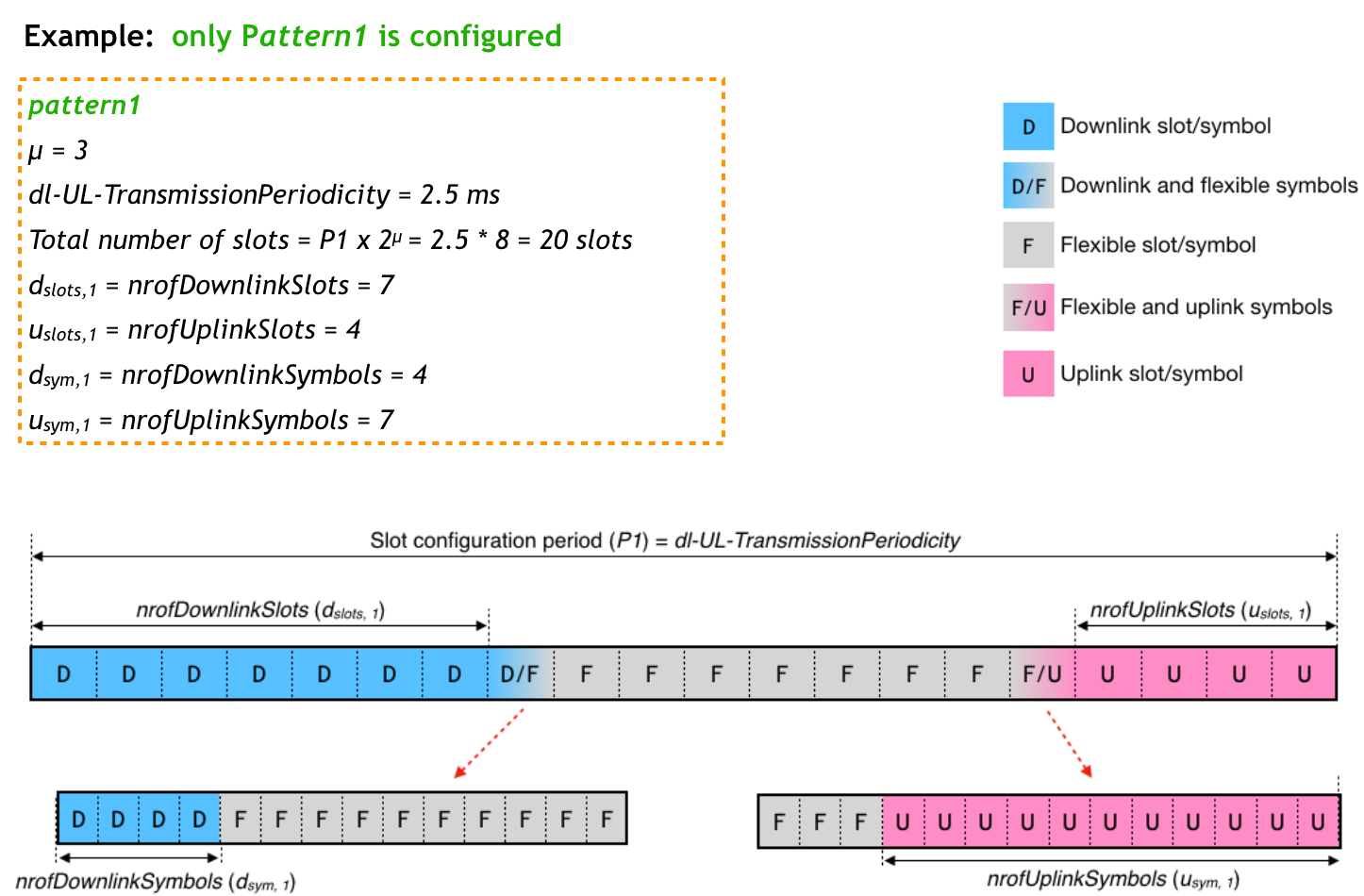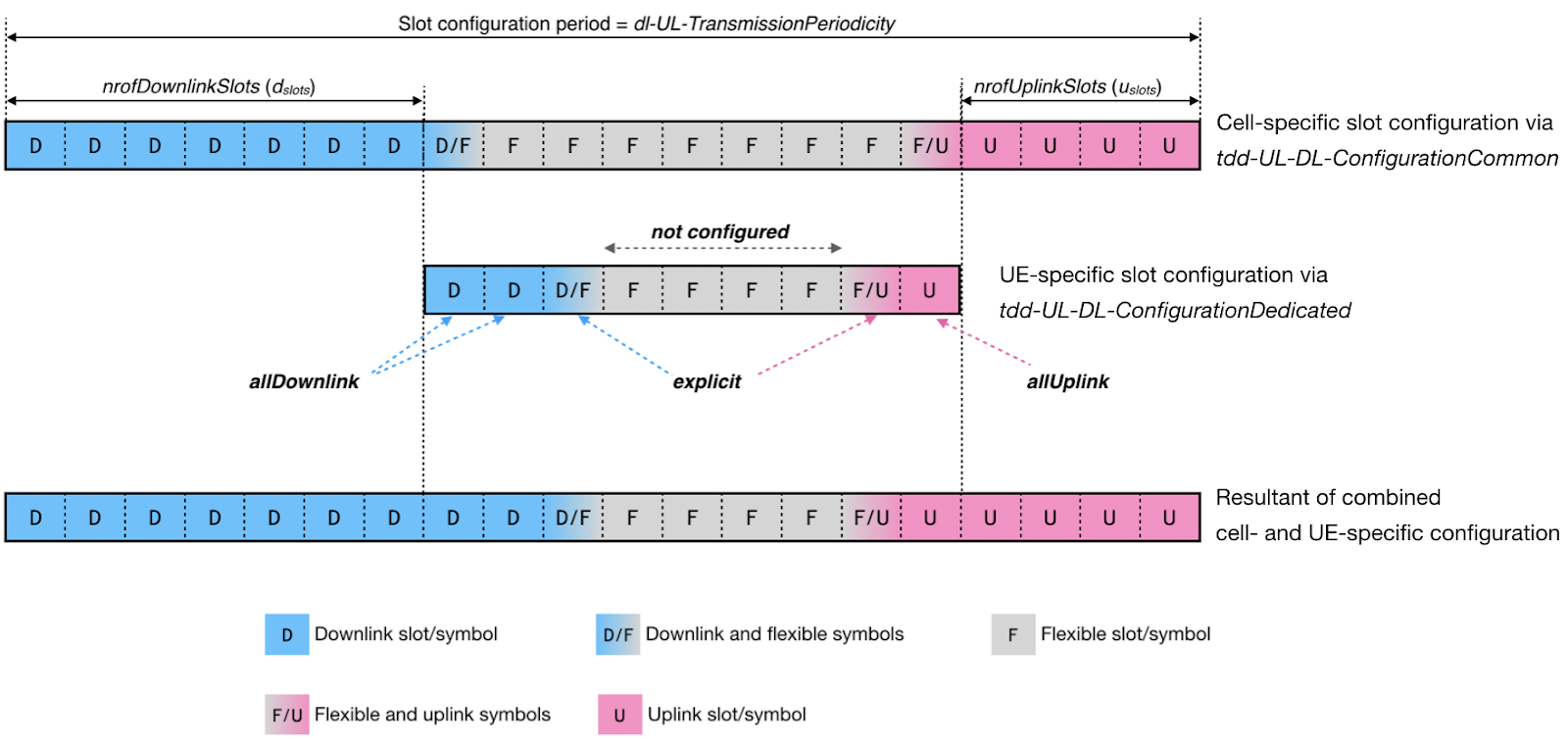5G-NR: Bandwidth Part (BWP)
Introduction:
A Bandwidth Part is a set of contiguous Common Resource Blocks. A Bandwidth Part may include all Common Resource Blocks within the channel bandwidth, or a subset of Common Resource Blocks
=> Bandwidth Parts are an important aspect of 5G because they can be used to provide services to UE which do not support the full channel bandwidth, i.e. the Base Station and UE channel bandwidth capabilities do not need to match.
->For example, a Base Station could be configured with a 400 MHz channel bandwidth, while a UE may only support a 200 MHz channel bandwidth. In this case, the UE can be configured with a 200 MHz Bandwidth Part and can then receive services using a subset of the total channel bandwidth.
=> A UE can be configured with up to 4 downlink Bandwidth Parts per carrier and up to 4 uplink Bandwidth Parts per carrier. Only a single Bandwidth Part per carrier can be active in each direction. A UE receives the PDCCH and POSCH only within an active downlink Bandwidth Part. A UE transmits the PUCCH and PUSCH only within an active uplink Bandwidth Part. A UE can complete measurements outside the active bandwidth part but this can require the use of Measurement Gaps.
Below Figure illustrates some example Bandwidth Part allocations for an operator using 2 x 400 MHz RF carriers. These examples illustrate the flexibility which Bandwidth Parts allow when configuring frequency domain resources.
=> the first UE is assumed to support the complete 400 MHz channel bandwidth and inter-band Carrier Aggregation
=> the second UE is assumed to support inter-band Carrier Aggregation but a maximum channel bandwidth of200 MHz
=> the third UE is assumed to support both inter and intra-band Carrier Aggregation with a maximum channel bandwidth of200 MHz. This combination allows the UE to use all 800 MHz of spcctrum simultaneously, i.e. a single active Bandwidth Part per Component Carrier.
=> the fourth VE is also assumed to support both inter and intra-band Carrier Aggregation. However, this UE is assumed to support a maximum channel bandwidth of 100 MHz and is configured with multiple Bandwidth Parts per Component Carrier
=> the fifth UE is assumed to support only one of the two operating bands and a maximum channel bandwidth of200 MHz. For the purposes of this example, the UE is allocated only a single Bandwidth Part to illustrate that the set of allocated Bandwidth Parts do not have to cover the complete channel bandwidth.
UE 1 configured with:
2 Camponent Carriers (inter-band Carrier Aggregation).
Single Bandwidth Part per Carrier
UE 2 configured with:
2 Component Carriers (inter-bond Carrier Aggregation)
2 Bandwidth Parts per Carrier
UE 3 configured with:
4 Campanent Carriers (intra & inter-band Carrier Aggregation)
Single Bandwidth Parts per Carrier

UE 4 configured with:
4 Camponent Carriers (intra & inter-band Carrier Aggregation)
Up to 4 Bandwidth Parts per Carrier

UE 5 configured with:
1 Component Carrier
1 Bandwidth Part
In above Figure, the second and third UE appear to have very similar configurations, i.e. both UE arc configured with 2 x 200 MHz Bandwidth Parts within each operating band. The second UE is configured with 2 Component Carriers and 2 Bandwidth Parts per carrier, whereas the third UE is configured with 4 Component Carriers and I Bandwidth Part per Carrier. This difference in configuration has implications upon some lower level procedures and also the RF performance requirements.
=> at the MAC layer there is a HARQ entity for each serving ce:11. The second UE which is configured with 2 Component Carriers would have 2 HARQ entities and HARQ re-transmissions can be switched between Bandwidth Parts by dynamically changing the active Bandwidth Part (field within the PDCCH DC] can be used to change the active Bandwidth Part). The third lJE which is configured with 4 Component Carriers would have 4 HARQ entities and HARQ re-transmissions cannot be switched between Component Carriers.
=> RF performance requirements such as out-of-band emissions are specified per carrier rather than per Bandwidth Part. This means that the second UE has to achieve its RF requirements at the edge of each 400 MHz carrier, while the third UE has to achieve its
RF requirements at the edge of each 200 MHz carrier.
BWP Types:
A UE uses an 'Initial' Bandwidth Part when first accessing a cell. The Initial Downlink Bandwidth Part can be signalled within SIB-1 using the inilia/DownlinkBWP parameter structure presented in below table. This parameter structure uses the locationAndBandwidth information element to specify the set of contiguous Common Resource Blocks belonging to the Initial Downlink Bandwidth Part. The value is coded using Resource Indication Value (RIV) rules with N size of BWP = 275 (these rules are described in section 3.6.4.2.2 within the context of allocating Resource Blocks for the POSCH). The RB start value which is derived from the locationAndBandwidth value is
added to the offsetToCarrier value i.e. the starting position of the Bandwidth Part is relative to the first usable Resource Block. The initia/DownlinkBWP parameter structure also specifics the subcarrier spacing to be used for the Bandwidth Part and provides the UE with cell level information for receiving the PDCCH and PDSCH.
The initial Downlink BWP parameter structure can also be provided to the UE using dedicated signalling. If the parameter structure is not provided to a UE then the Initial Downlink Bandwidth Part is defined by the set of Rcsource Blocks belonging to the Control
Resource Set (CORESET) for the Type O PDCCH Common Search Space. These Resource Blocks can be deduced from information within the MIB.
Information regarding the Initial Uplink Bandwidth Part can also be signalled within SIB-1 or by using dedicated signalling.
The Base Station can use dedicated signalling to configure up to 4 Downlink Bandwidth Parts per cell and up to 4 Uplink Bandwidth Parts per cell. The parameter structure used to configure a Downlink Bandwidth Part. The Initial Bandwidth Part is referenced using an identity of 0, whereas other Bandwidth Parts are allocated an identity within the range 1 to 4
=> In the case of TDD, an Uplink and Downlink Bandwidth Part with the same bwp-ld share the same center frequency
=> The Base Station can dynamically switch the Active Bandwidth Part using the Bandwidth Part Indicator field within DCI Formats 0 and 1_1. The switching procedure is not instantaneous so the Base Station cannot allocate resources immediately after changing the Active Bandwidth Part. The switching delay is specified within 3GPP TS 38.133.
=> A UE can also be configured with a Default Downlink Bandwidth Part (identified using defaultDownlinkB WP-Id which points to one of the configured hwp-id values). If a UE is not explicitly provided with a Default Downlink Bandwidth Part then it is assumed to be
the Initial Downlink Bandwidth Part.
=> If a UE is configured with a bwp-lnactivityTimer then the UE switches back to the Default Downlink Bandwidth part after the inactivity timer has expired while using a non-Default Downlink Bandwidth Part.



















